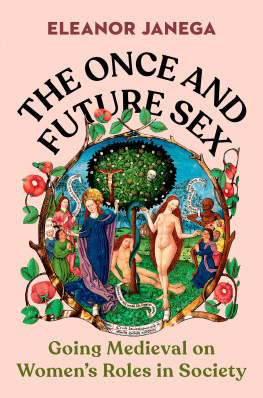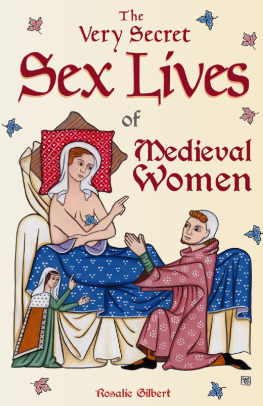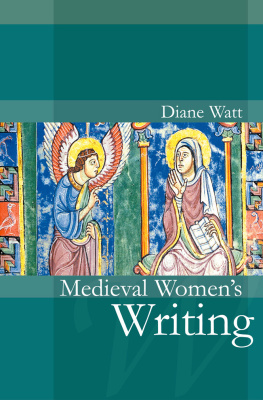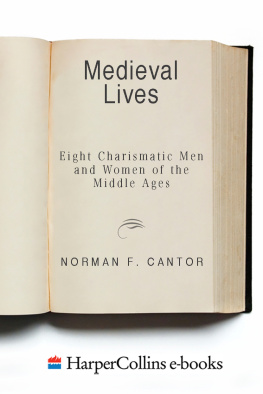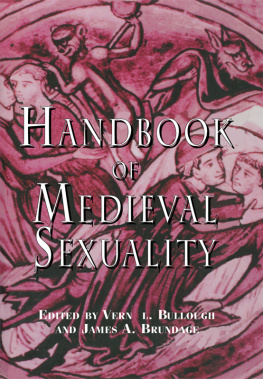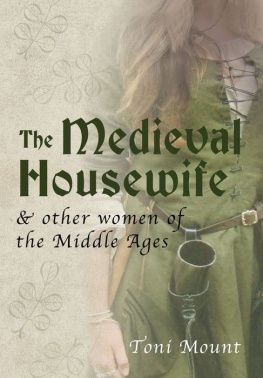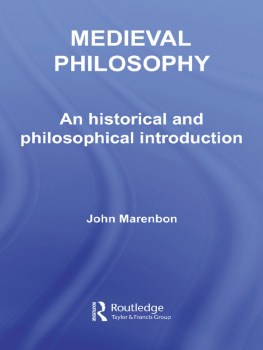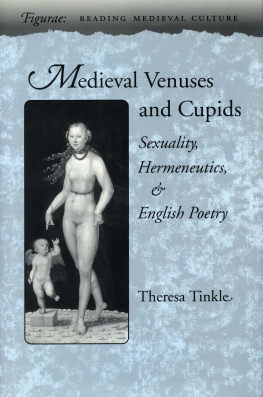Eleanor Janega - The Once and Future Sex: Going Medieval on Womens Roles in Society
Here you can read online Eleanor Janega - The Once and Future Sex: Going Medieval on Womens Roles in Society full text of the book (entire story) in english for free. Download pdf and epub, get meaning, cover and reviews about this ebook. City: New York, year: 2023, publisher: W. W. Norton & Company, genre: History. Description of the work, (preface) as well as reviews are available. Best literature library LitArk.com created for fans of good reading and offers a wide selection of genres:
Romance novel
Science fiction
Adventure
Detective
Science
History
Home and family
Prose
Art
Politics
Computer
Non-fiction
Religion
Business
Children
Humor
Choose a favorite category and find really read worthwhile books. Enjoy immersion in the world of imagination, feel the emotions of the characters or learn something new for yourself, make an fascinating discovery.
- Book:The Once and Future Sex: Going Medieval on Womens Roles in Society
- Author:
- Publisher:W. W. Norton & Company
- Genre:
- Year:2023
- City:New York
- Rating:4 / 5
- Favourites:Add to favourites
- Your mark:
The Once and Future Sex: Going Medieval on Womens Roles in Society: summary, description and annotation
We offer to read an annotation, description, summary or preface (depends on what the author of the book "The Once and Future Sex: Going Medieval on Womens Roles in Society" wrote himself). If you haven't found the necessary information about the book — write in the comments, we will try to find it.
Named a Most Anticipated Book of 2023 by The Millions
A vibrant and illuminating exploration of medieval thinking on womens beauty, sexuality, and behavior.
What makes for the ideal woman? How should she look, love, and be? In this vibrant, high-spirited history, medievalist Eleanor Janega turns to the Middle Ages, the era that bridged the ancient world and modern society, to unfurl its suppositions about women and reveal whats shifted over timeand what hasnt.
Enshrined medieval thinkers, almost always male, subscribed to a blend of classical Greek and Roman philosophy and Christian theology for their concepts of the sexes. For the height of female attractiveness, they chose the mythical Helen of Troy, whose imagined pear shape, small breasts, and golden hair served as beautys epitome. Casting Eves shadow over medieval women, they derided them as oversexed sinners, inherently lustful, insatiable, and weak. And, unless a nun, a woman was to be the embodiment of perfect motherhood.
In contrast, drawing on accounts of remarkable and subversive medieval women like Eleanor of Aquitaine and Hildegard of Bingen, along with others hidden in documents and court cases, Janega shows us how real women of the era lived. While often mothers, they were industrious farmers, brewers, textile workers, artists, and artisans and paved the way for new ideas about womens nature, intellect, and ability.
In The Once and Future Sex, Janega unravels the restricting expectations on medieval women and the ones on women today. She boldly questions why, if our ideas of women have changed drastically over time, we cannot reimagine them now to create a more equitable future.
11 illustrationsEleanor Janega: author's other books
Who wrote The Once and Future Sex: Going Medieval on Womens Roles in Society? Find out the surname, the name of the author of the book and a list of all author's works by series.

